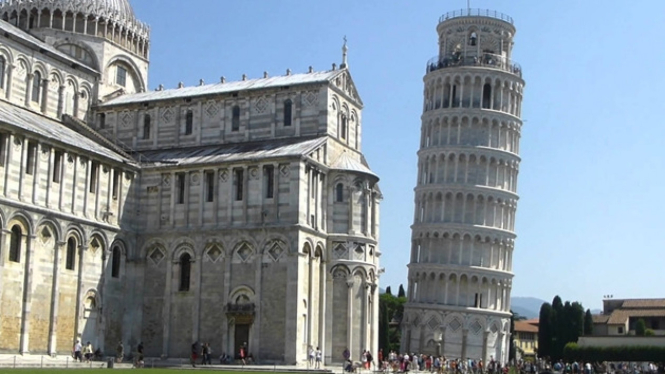- U-Report
VIVA – The Tower of Pisa in Italy is 850 years old. Engineers, historians, and observers have been wondering why the leaning tower is still standing after surviving an earthquake. Now, everyone can breathe because of relief as a recent survey found that its health is much better than expected.
The tower has risen about 4 centimeters (1.6 inches) in the 21 years since the last stabilization work was done.
The survey was conducted by a team of geotechnical engineers and funded by Opera Primaziale Pisana (OPA), a non-profit organization established to oversee construction work to preserve the historic site.
"Considering that it is an 850-year-old patient with a slope of about five meters and a drop of more than three meters, the health condition of the Leaning Tower of Pisa is excellent," an OPA spokesperson told Italy's National Associated Press Agency (ANSA).
Menara Pisa di Italia.
- U-Report
Construction of the Tower of Pisa began in 1174, and within a few years, something seemed to go wrong. Its shallow foundations were built on an unstable base of mud, sand, and clay, softer on the south side.
Engineers tried to correct the slope, making the upper floors higher on one side than the other, resulting in what could be said to be an extraordinary building that curved and tilted.
By the 1990s the Tower of Pisa was no longer close to solid ground, tilting 5.5 degrees to the south, just beyond the point where engineer predicted the tower would collapse, according to the Science Alert page, Wednesday, December 22, 2022.
After that, the building was closed to the public and the Italian government asked a group of experts, headed by civil engineer Michele Jamiolkowski to find a way to save it.
They thought about injecting cement under the tower but abandoned the idea as too risky and instead tried anchoring the north side down with 900 tons (816 metric tons) of lead ballast to compensate for the sinking south side.
When that didn't work, they dug up the ground from under the north side of the tower. It slowly began to rise. The decade-long stabilization project was completed in 2001 and the tower was straightened by about 40 centimeters.
Today the slope is only about 4 degrees. In 2013, researchers from Australia's national science agency, CSIRO, also mapped every nook and cranny of the tower using a 3D scanner, creating several digital reconstructions of the tower that can be used if the building needs repair.


























